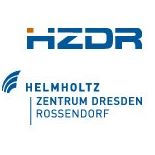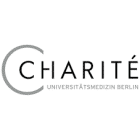预约演示
更新于:2025-12-09

Helmholtz-Zentrum Dresden-Rossendorf e. V.
更新于:2025-12-09
概览
标签
肿瘤
泌尿生殖系统疾病
神经系统疾病
小分子化药
诊断用放射药物
抗体偶联核素
疾病领域得分
一眼洞穿机构专注的疾病领域
暂无数据
技术平台
公司药物应用最多的技术
暂无数据
靶点
公司最常开发的靶点
暂无数据
| 排名前五的药物类型 | 数量 |
|---|---|
| 诊断用放射药物 | 8 |
| 小分子化药 | 7 |
| 抗体偶联核素 | 1 |
| 治疗用放射药物 | 1 |
关联
12
项与 Helmholtz-Zentrum Dresden-Rossendorf e. V. 相关的药物靶点 |
作用机制 nectin-4调节剂 |
在研适应症 |
非在研适应症- |
最高研发阶段临床阶段不明 |
首次获批国家/地区- |
首次获批日期- |
作用机制 IDH1 R132H抑制剂 [+1] |
在研适应症 |
非在研适应症- |
最高研发阶段临床前 |
首次获批国家/地区- |
首次获批日期- |
靶点 |
作用机制 PSCA抑制剂 |
在研适应症 |
非在研适应症- |
最高研发阶段临床前 |
首次获批国家/地区- |
首次获批日期- |
2
项与 Helmholtz-Zentrum Dresden-Rossendorf e. V. 相关的临床试验NCT06189898
Functional Imaging to Identify Radiosensitive Esophageal Cancer - a Biomarker Validation Study
This trial on biomarker validation investigates the use of innovative re-staging FDG-PET parameters to detect highly chemoradiation (CRT) sensitive squamous cell carcinomas of the esophagus (SCEC) at the end of preoperative or definitive CRT.
开始日期2023-12-15 |
申办/合作机构 |
NCT05192655
Künstliche Intelligenz (KI) in Der Funktionellen Bildgebung Zur Individualisierten Behandlung Von Kopf-Hals-Plattenepithelkarzinom-Patienten Artificial Intelligence in Functional Imaging for Individualized Treatment of Head and Neck Squamous Cell Carcinoma Patients
The two curative treatment modalities for patients with HNSCC - primary chemoradiation (CRT) or primary surgery (often combined with postoperative (C)RT) - are both associated with serious side effects for which reason further stratification, optimization and personalization of treatment is urgently needed. As novel quantitative image analyses are a promising tool for further risk stratification, the investigators training a three-dimensional Convolutional Neural Network on 18F-Fluorodesoxyglucose (FDG) positron emission tomography (PET) imaging and clinical / histopathological data of a multicentric, retrospective cohort of 1200 patients treated with primary CRT and 800 patients treated with primary surgery at Charité and cooperation institutes in order to predict individual treatment-specific outcomes and identify patients with excellent outcome after primary CRT or primary surgery or unfavorable outcome for both. The trained algorithm of the artificial intelligence will be validated in a prospective trial to see if predicted loco-regional control and recommended treatment strategies are reliable. In total 250 curative HNSCC patients, treated with CRT or primary surgery, will be enrolled on this prospective validation trial with observational character, while biomarker, clinical and FDG-PET data are collected from these patients and follow-up visits will be concluded.
开始日期2021-12-01 |
申办/合作机构 |
100 项与 Helmholtz-Zentrum Dresden-Rossendorf e. V. 相关的临床结果
登录后查看更多信息
0 项与 Helmholtz-Zentrum Dresden-Rossendorf e. V. 相关的专利(医药)
登录后查看更多信息
2,769
项与 Helmholtz-Zentrum Dresden-Rossendorf e. V. 相关的文献(医药)2025-12-02·ACS Nano
Na Intercalation in Bilayer Graphene: Formation of a Close-Packed Trilayer
Article
作者: Suenaga, Kazu ; Lin, Yung-Chang ; Solís-Fernández, Pablo ; Krasheninnikov, Arkady V. ; Ago, Hiroki ; Nishibori, Eiji ; Ghorbani-Asl, Mahdi ; Matsumoto, Rika
Sodium (Na) intercalation into bulk graphite is predicted to be energetically unfavorable and has therefore long been considered difficult to achieve. Here, we report the successful intercalation of Na into bilayer graphene (BLG), confirmed by post-intercalation STEM characterization performed under inert conditions. Our results reveal that Na forms not a single layer but a trilayer structure with close-packed face-centered cubic (fcc) (111) stacking within the van der Waals gap of BLG. Density functional theory (DFT) calculations further confirm that the trilayer configuration is energetically more favorable than single or bilayer arrangements. This finding adds a missing piece to the understanding of alkali metal intercalation in low-dimensional systems and highlights the potential of Na and BLG as promising candidates for energy storage and nanoelectronic applications, offering advantages in safety and stability over lithium-based systems.
2025-10-09·Nature
Quantitative imaging of lipid transport in mammalian cells
Article
作者: Cook, Katelyn C ; Iglesias-Artola, Juan M ; Jiménez López, Cristina ; Pombo-Garcia, Karina ; Nadler, André ; Drobot, Björn ; Garikapati, Vannuruswamy ; Honigmann, Alf ; Schuhmann, Kai ; Böhlig, Kristin ; Lennartz, H Mathilda ; Hof, Martin ; Lohmann, Annett ; Šachl, Radek ; Riegerová, Petra ; Shevchenko, Andrej ; Schuhmacher, Milena ; Barahtjan, Pavel
Abstract:
Eukaryotic cells produce over 1,000 different lipid species that tune organelle membrane properties, control signalling and store energy1,2. How lipid species are selectively sorted between organelles to maintain specific membrane identities is largely unclear, owing to the difficulty of imaging lipid transport in cells3. Here we measured the retrograde transport and metabolism of individual lipid species in mammalian cells using time-resolved fluorescence imaging of bifunctional lipid probes in combination with ultra-high-resolution mass spectrometry and mathematical modelling. Quantification of lipid flux between organelles revealed that directional, non-vesicular lipid transport is responsible for fast, species-selective lipid sorting, in contrast to the slow, unspecific vesicular membrane trafficking. Using genetic perturbations, we found that coupling between energy-dependent lipid flipping and non-vesicular transport is a mechanism for directional lipid transport. Comparison of metabolic conversion and transport rates showed that non-vesicular transport dominates the organelle distribution of lipids, while species-specific phospholipid metabolism controls neutral lipid accumulation. Our results provide the first quantitative map of retrograde lipid flux in cells4. We anticipate that our pipeline for mapping of lipid flux through physical and chemical space in cells will boost our understanding of lipids in cell biology and disease.
2025-09-03·ACS Applied Materials & Interfaces
Reversible Magneto-Ionic Control of Exchange Bias in Coupled Spin-Valve-Like Heterostructures
Article
作者: Ehrler, Rico ; Zehner, Jonas ; Huhnstock, Rico ; Leistner, Karin ; Ehresmann, Arno ; Gößler, Markus ; Hellwig, Olav ; Röder, Falk
Voltage control of exchange bias (EB) is an important technological goal for low-power spintronic sensor and memory devices. The magneto-ionic (MI) approach for voltage-controlled EB is a promising strategy to achieve this goal, utilizing electrochemical reactions at low operational voltages. In typical MI devices, however, the sensitive EB layers are directly targeted by the electrochemical reactions, which often impairs reversibility. Here, we introduce an alternative device structure by isolating the EB layers from the active MI layer. Making use of the interlayer (IL) coupling through a spacer layer in an IrMn/Fe/Au/Fe spin-valve-like heterostructure, we show that EB can be reversibly controlled by an electrochemical modification of the top layer. Using the same device structure, we also realize an MI switching between single-step and double-step hysteresis loops. We interpret the observed MI effects via an increasing top Fe layer thickness, caused by the electrochemical reduction of FeOx to ferromagnetic Fe. Modeling of hysteresis loops as a function of top layer thickness in an extended Stoner-Wohlfarth approach corroborates this interpretation. Our results highlight an advanced strategy for improving reversibility in MI devices and open a novel pathway toward voltage-controlled spin valves.
100 项与 Helmholtz-Zentrum Dresden-Rossendorf e. V. 相关的药物交易
登录后查看更多信息
100 项与 Helmholtz-Zentrum Dresden-Rossendorf e. V. 相关的转化医学
登录后查看更多信息
组织架构
使用我们的机构树数据加速您的研究。
登录
或

管线布局
2025年12月29日管线快照
管线布局中药物为当前组织机构及其子机构作为药物机构进行统计,早期临床1期并入临床1期,临床1/2期并入临床2期,临床2/3期并入临床3期
药物发现
3
8
临床前
其他
4
登录后查看更多信息
当前项目
登录后查看更多信息
药物交易
使用我们的药物交易数据加速您的研究。
登录
或

转化医学
使用我们的转化医学数据加速您的研究。
登录
或

营收
使用 Synapse 探索超过 36 万个组织的财务状况。
登录
或

科研基金(NIH)
访问超过 200 万项资助和基金信息,以提升您的研究之旅。
登录
或

投资
深入了解从初创企业到成熟企业的最新公司投资动态。
登录
或

融资
发掘融资趋势以验证和推进您的投资机会。
登录
或

生物医药百科问答
全新生物医药AI Agent 覆盖科研全链路,让突破性发现快人一步
立即开始免费试用!
智慧芽新药情报库是智慧芽专为生命科学人士构建的基于AI的创新药情报平台,助您全方位提升您的研发与决策效率。
立即开始数据试用!
智慧芽新药库数据也通过智慧芽数据服务平台,以API或者数据包形式对外开放,助您更加充分利用智慧芽新药情报信息。
生物序列数据库
生物药研发创新
免费使用
化学结构数据库
小分子化药研发创新
免费使用
